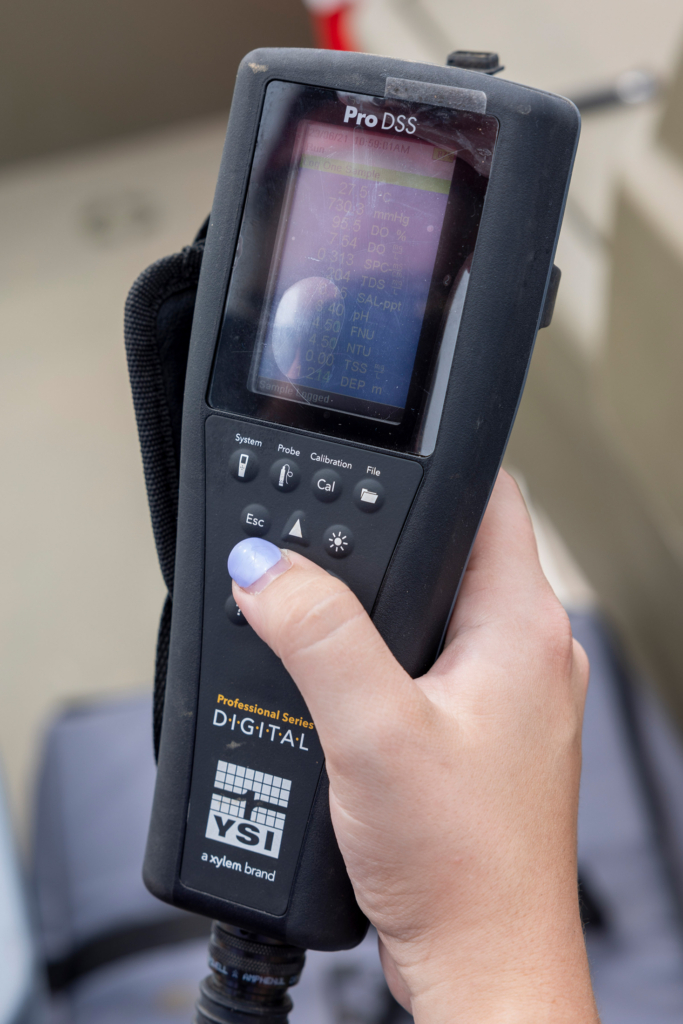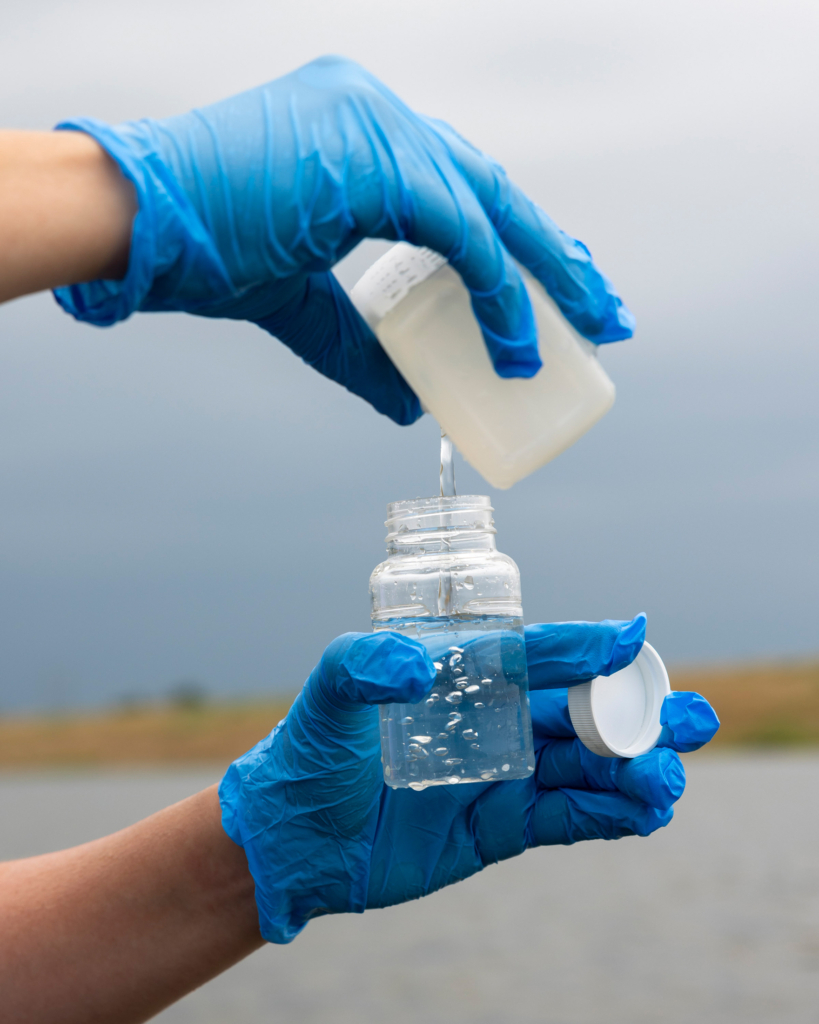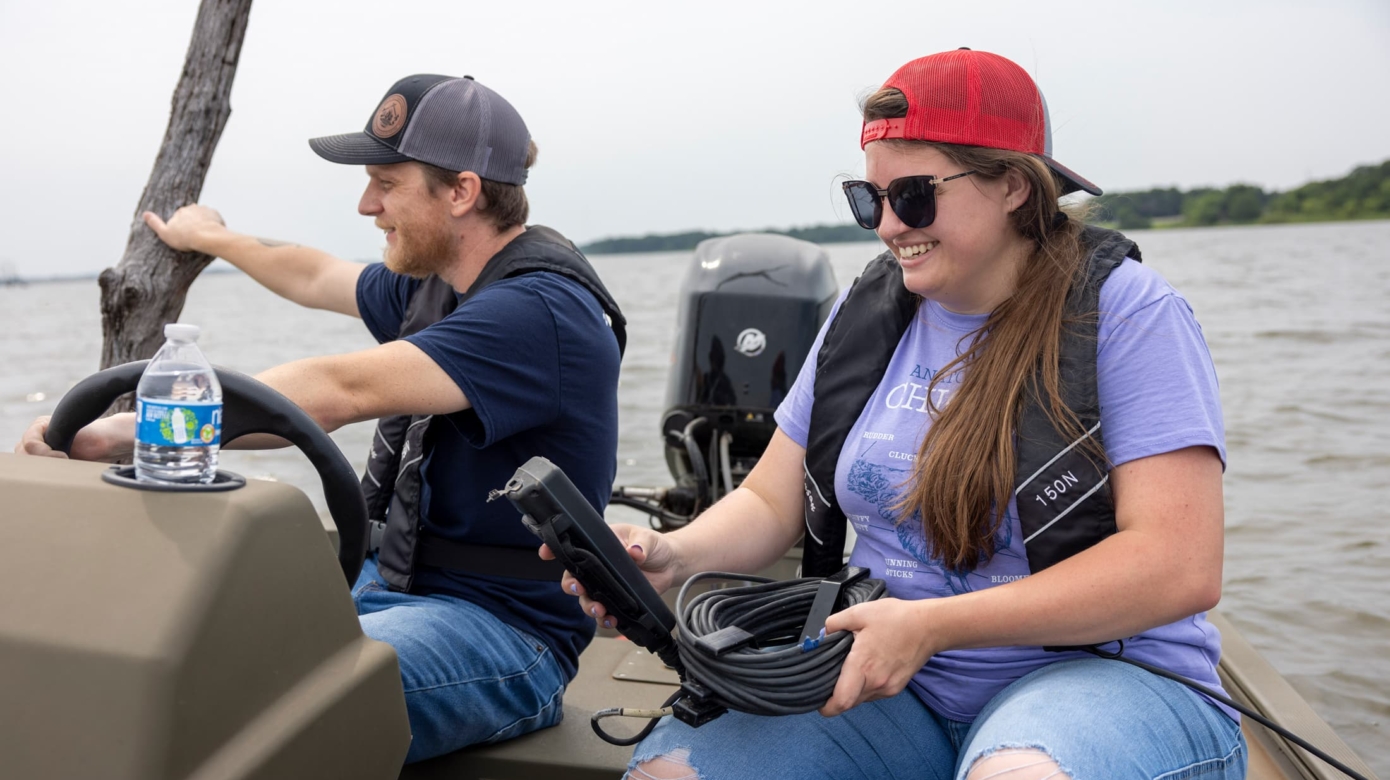In Potawatomi culture, water is regarded as a powerful, life sustaining force that should be cared for and highly regarded. August is National Water Quality Month, and the Citizen Potawatomi Nation Department of Environmental Protection began water quality testing across Tribal land in 2008.
For several years, staff members have increased their efforts in protecting human health and the environment. Environmental Department Assistant Director Micah Isaacs began working for the Tribe in 2012. He and Environmental Specialist Samantha Hinman now visit 10 locations on a monthly or bi-monthly basis, including spots along Squirrel Creek and North Deer Creek as well as at the Wes Watkins Reservoir, sampling approximately 17 water quality parameters.
“Part of the reason why we sample (is) to get that baseline data set to see, are our waters getting better or are they getting worse and what can we do in the long term to help mitigate some of those things?” Isaacs said.
They collect samples with equipment known as a sonde that reports several factors, including temperature, depth, oxygen, pH and salt levels, conductivity, and turbidity. According to Hinman, it is easy to get stuck looking at “numbers on a screen.”

“I’m looking for stream bank conditions. I’m looking for oils (on the surface). I’m looking for iron precipitate. … And then I’m also like, ‘Is there trash in the water?’” she said.
Looking at elements beyond the data gives insight to what kind of habitat the water supports. The Department performs further analysis of the samples in CPN’s water lab to see what types of water bugs live in the sample sites. Some grow well in pollution, while others do not, and their absence or presence reveals a lot about the area.
“What we’re really looking for is the type of bugs that cannot grow in pollution. If we have that type of habitat, it kind of backs up our data in saying that we are doing our job, we’re doing what we’re supposed to in protecting our waters,” Hinman said.
Their field analysis also includes weather reports and how the water and surrounding land look that day. Repeating the process sometimes multiple times a month makes the data more precise.
“We could go pull a sample right now from one of the spots, and I could tell you almost exactly what it’s supposed to be and what it’s supposed to look like. And that only comes with going out there and getting familiar with everything. … Not only because we like to play in the water, but it’s something that is beneficial,” Isaacs said.
Data as sovereignty
Isaacs listed getting “reliable, legally defensible scientific data” to ultimately make informed decisions on protecting human health and other valuable Tribal resources as a main motivation for testing.
“States have their own right to go out and manage their own water resources, too, and so tribes should have that (same) right,” he said. “It’s part of exercising that tribal sovereignty that we have.”
According to Isaacs and Hinman, CPN regularly tests bodies of water the Oklahoma Department of Environmental Quality never has, including some that have yet to be named.
“(Having the data) also builds reliability and credibility just within the state and within the state partners that you work with and maybe looking at your data and builds rapport with the EPA, also the people that are funding your projects,” Isaacs said.
CPN receives the EPA’s Non-Point Source Pollution Grant through Section 319 of the Clean Water Act (1972). Non-point source pollution refers to any water pollution not caused by a single source, like an industrial factory. It often refers to runoff from pastures, construction sites and domesticated animals, most of the time after a heavy rainstorm. The Environmental Department used the 319 funds to begin building a high flow bypass system by the Eagle Aviary in recent years, an area known for heavy flooding.

“There’s going to be a series of aquatic filters in here to be cleaning the water before it enters the North Canadian River,” he said.
It provides a secondary route for the water when it gets high and floods the land. The filters clean the water and prevent flooding while still allowing nature to control the flow.
Building the dataset and relationships with regulatory agencies also reinforces the Tribe’s sovereignty and paves the way for future accomplishments.
“Another goal of tribal sovereignty would be to completely manage our own environmental regulatory programs that could include a water quality standards program,” Isaacs said.
Education as culture
Their work with water quality reflects Tribal cultural values, including maintaining a reciprocal relationship with the land.
“Water quality is incredibly important to tribal people,” Hinman said. “Me being a member of the Choctaw Nation, … water is central to tribal identity for our ceremonies, medicine and just overall promoting resource independence.”
Colonization and industrialization have made it difficult to build those connections for Tribal members in today’s society. However, the CPN Department of Environmental Protection aims to reinvigorate people’s passion for environmentalism with a more scientific approach that puts those values on display.
Hinman and Isaacs have several educational materials and visit schools to teach elementary school students about non-point source pollution in their communities. One of them looks like a Lego set that demonstrates waterflow and the movement of sediment and other pollutants, including domestic animal waste. They simulate a rainstorm and use cocoa power and Kool-Aid as dirt and runoff, and they discuss how to reduce the pollution.
“The older kids, they absolutely loved it. And even the adults were having a lot of fun with it, too. And … we used Kool-Aid packets to dye the waters different colors. And then we had that cocoa powder and once it had all mixed up, it smelled awful,” Hinman said and laughed.
The 319 grant requires an educational aspect, but Hinman and Isaacs see it as an important responsibility. They love the time spent with kids and families showing them how their homes and actions contribute to their community’s water quality.
“That’s really the only way that we’re going to get over the hump long term is by teaching and educating the younger generations,” Isaacs said. “You can teach and educate me all you want, but if the people coming behind me are not doing more than what we’re doing now, then you’re going to be taking a step back.”
Water quality testing and education about water pollution are only two small facets of the Environmental Department’s work, but ones that bring together the Tribe’s ability to look after the land and pass along those methods.
“The whole point is that we should be able to have the water on our land the way we want,” Hinman said. “Which means we want it clean, plentiful and as unrestricted from its natural affinity as possible.”

